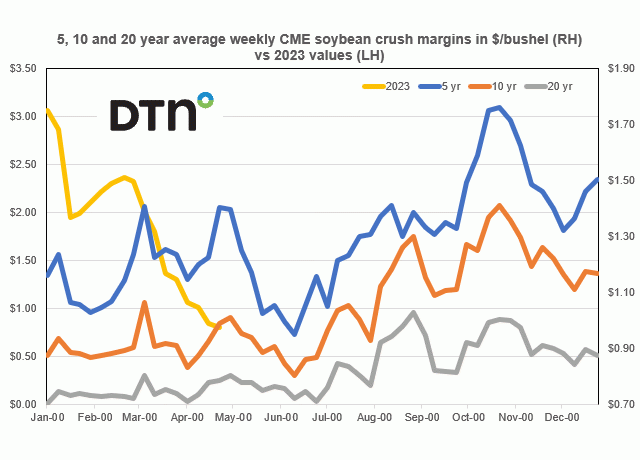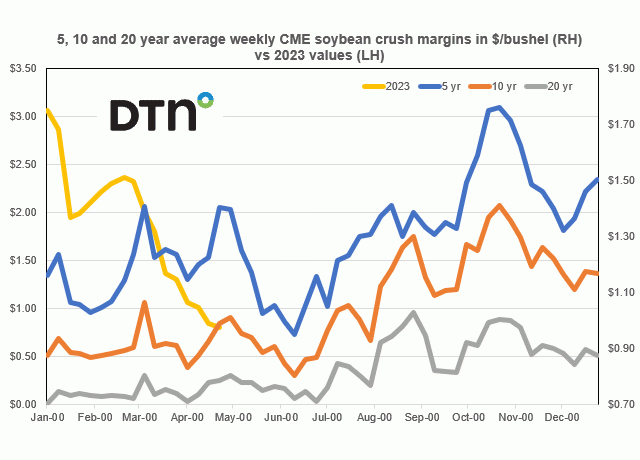Fundamentally Speaking
Contracting Crush Margins
One of the key supportive factors for soybean futures last year was very strong crush margins that prompted soybean processors to bid aggressively for whatever soybeans were around.
In 2022, the CME soybean crush margins at certain points in the year were over $3.00 per bushel, record high, and interior cash soybean processing margins were even higher.
The average 2022 weekly soybean crush margin last year was $2.05 per bushel, almost double the year prior average of $1.04 and the highest ever, topping the 2018 peak of $1.41.
This year, however, has been a different story as CME crush margins have crashed from over $3.00 per bushel at the start of the year to a mere 80 cents per bushel over the past week.
P[L1] D[0x0] M[300x250] OOP[F] ADUNIT[] T[]
Soybeans are processed into soybean oil and soybean meal with a few soybean hulls so the stronger the product values (oil and meal) are relative to soybeans, the more profitable it is to crush soybeans.
Since the beginning of 2023 however, the products have been relatively weaker.
Nearby soybean oil is now trading close to its lowest levels since March 2021 as falling crude oil prices and a recovery in palm oil production has weighed on that market.
Meanwhile soybean meal is trading at new lows for the year as what promises to be a monster Brazilian crop is helping offset the drought reduced volumes from Argentina.
On the other hand, until recently soybean prices themselves had held on given still tight supplies and concerns that 2023 U.S. production may be limited if the 87.5 million acres intended to be put into the ground proves correct.
This chart shows the five, ten and twenty-year average weekly CME soybean crush margins in dollars per bushel on the left-hand axis and the weekly 2023 values on the right-hand axis.
One can see that the 2023 crush margins fell right from the start of the year had a month-long rally in February which is the seasonal pattern exhibited by the 20- and 10-year averages and even more so over the past five seasons.
Then margins contracted in March but rather than pop higher in April as is the seasonal pattern, they continued to retrench.
Right now, the weekly margins are well below the respective 5 and 10-year averages at this time of year but even close to the 20-year average.
Seasonally, margins usually fall this time of year right into the beginning of July where they push higher into the start of harvest so we will see what things transpire over the next few weeks.
(c) Copyright 2023 DTN, LLC. All rights reserved.






Comments
To comment, please Log In or Join our Community .